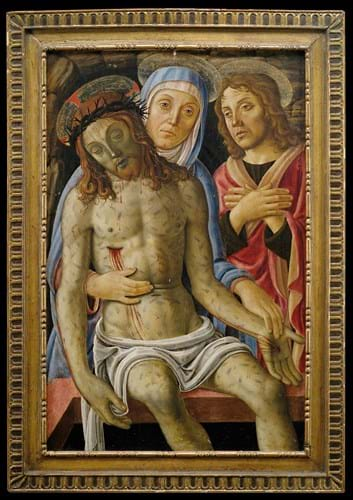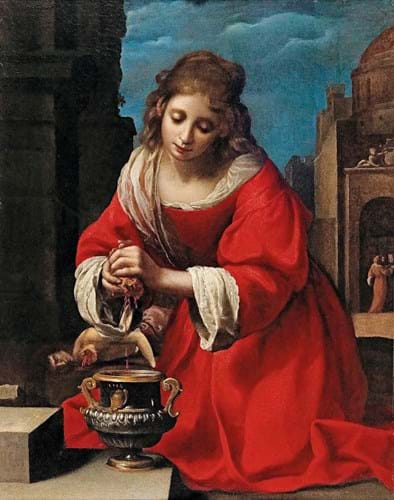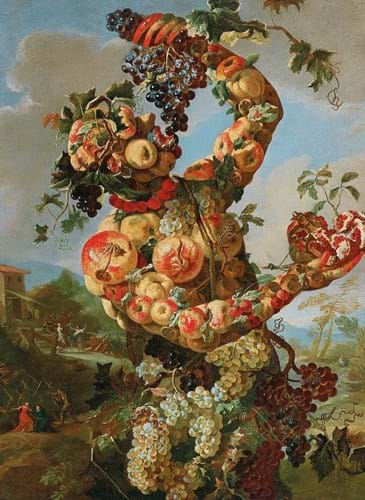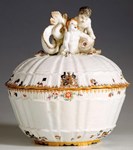
When quality and provenance came together, the bidders showed remarkable determination, much to the joy of auctioneers and consignors.
Cologne start
The season at Lempertz (24% buyer’s premium) in Cologne got off to an encouraging start on September 20.
Traditionally the first autumn sale contains medium-priced Old Master and 19th century paintings.
A 1ft 11in x 2ft 11in (58 x 88cm) copy of The Lion Hunt by Peter Paul Rubens from 1621 was catalogued by Lempertz as the work of a French 19th century artist and given an estimate of €3000-4000.
The amount of interest in the run-up to the sale gave some indication that there was more to the painting, which had been consigned by a south German collector, than the in-house experts had originally thought.
Intense initial bidding emerged and after most of the field dropped out, two bidders on the phone remained. They carried on until the hammer fell at €250,000 (£221,240).
After the sale it became apparent that the bidders were convinced that the unsigned painting was in fact by Eugène Delacroix (1798-1863).
He is known to have executed at least 30 works after Rubens.
An auction of paintings from Delacroix’s atelier, held one year after the artist’s death, contained 14 subjects after Rubens, while the rest were traced to private and museum collections.
Florentine in Stuttgart

An oil and tempera on wood painting of The Entombment of Christ, catalogued as circle of Botticelli, which was sold for €170,000 (£150,440) by Nagel in its October 10-11 auction.
Two weeks after the Cologne sale, an early 16th century Florentine painting took top honours at Nagel’s (33% buyer’s premium) auction of October 10-11 in Stuttgart.
The provenance of The Entombment of Christ, a 2ft 5in x 20in (80 x 51cm) oil and tempera on wood, was given as ‘Property of a Princely House’ and on the reverse was an old inventory number 264.
The auctioneers could provide no further details about any other previous owners.
They attributed the painting to the circle of Alessandro di Mariano Filipepi, better known as Sandro Botticelli (Florence 1445-1510).
The catalogue estimate of €10,000 was very speculative and bidders from home and abroad thought they saw a chance.
Most of them dropped out of the running when the bidding went into six figures and eventually closed at €170,000 (£150,440), with an international dealer claiming his prize.
Vienna high point

Felice Ficherelli’s painting of Saint Praxedis which realised €285,000 (£252,220) in Dorotheum’s October 17 Old Masters’ auction.
Next stop on the tour was Vienna, where Dorotheum (25/22% buyer’s premium) held its autumn sale of Old Masters, traditionally one of the high points of the season, on October 17.
This time around bidding was somewhat patchy, with only about half the 380 lots finding a buyer. Several noteworthy results appeared, however.
As in previous sales, Italian paintings were particularly sought-after. Fresh to the market, of historical importance and with a well- documented provenance, a painting by Felice Ficherelli (1603- 60) caused quite a stir. It was a 3ft 9in x 2ft 11in (1.15m x 90cm) depiction of Saint Praxedis, which is known in two other variants.
One is a version by Ficherelli himself that was part of the collection of the academic and author Carlo del Bravo (1953-2017) in Florence and now belongs to a private collector in Ferrara.
The other version was a copy painted by Johannes Vermeer (1632-75) in 1655 that was sold at Christie’s in London in July 2014 for £5.5m. Until now, it was thought that Vermeer had based his work on the painting in the Del Bravo collection. The discovery of the version in the Viennese sale would appear to change this theory. It is closer to Vermeer’s painting than the Del Bravo version.
An extra attraction was the fact that it had been owned by the same family for many generations, passing by descent from the first documented owner, Jacopo Serzelli, who owned it prior to 1681.
Dorotheum had been expecting €150,000-200,000 – the anonymous buyer secured it for €285,000 (£252,220).
Living on the veg

Autumn from an anthropomorphic set of the Four Seasons by Giovanni Paolo Castelli, (Lo Spadino) which realised €350,000 (£309,735) at Dorotheum.
In the early 17th century there was a revival of the distinctive anthropomorphic compositions of fruit and vegetables pioneered by Giuseppe Arcimboldo (1526-93) at the court of the Habsburg Emperor Rudolf II.
Four anthropomorphic still-life paintings of the seasons (shown above is Autumn), each 4ft 4in x 3ft 1in (1.31m x 94cm) painted by Giovanni Paolo Castelli, called Lo Spadino (1659-c.1730), lived up to their expectations.
They sold together for €350,000 (£309,735) to an international museum, going above the joint lower estimate of €320,000.
There was prolonged bidding for an 15 x 11in (39 x 28cm) oil sketch on copper by Giovanni Francesco Barbieri, called il Guercino (1591- 1666). His The Risen Christ appears to the Virgin was on offer for €30,000- 40,000, but changed hands for €110,000 (£97,345).
The complete painting, a monumental altarpiece, belongs to the Pinacoteca Civica in Cento. There are numerous differences in colour and compositional details between the bozzetto and the finished painting.
The museum in Cento was badly damaged by an earthquake in 2012 and has been closed ever since.
£1 = €1.13














